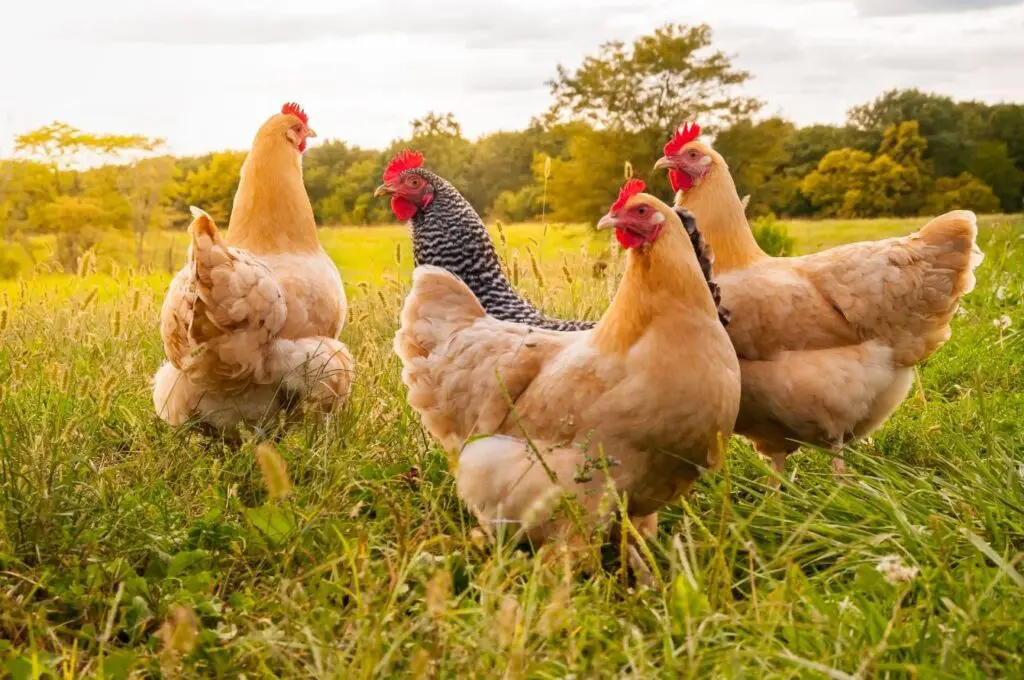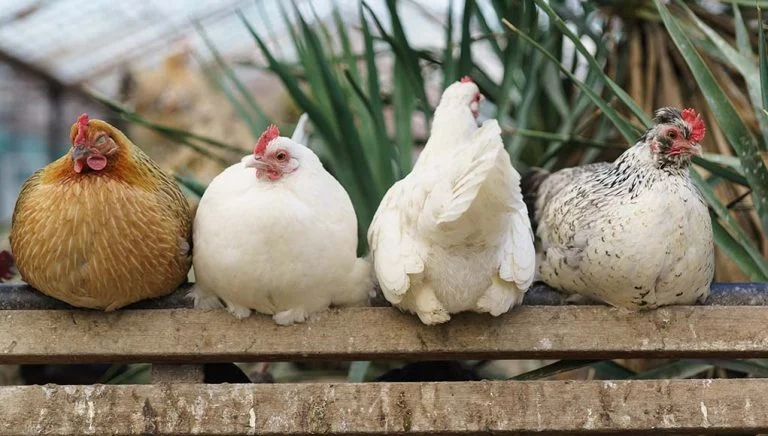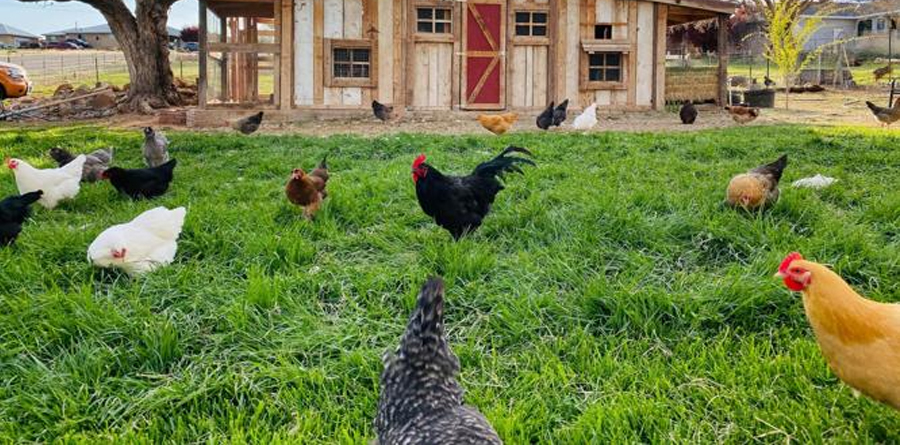How To Successfully Start Backyard Chicken Raising.
Raising backyard chickens is a gratifying pursuit with numerous benefits. Firstly, it provides a direct source of fresh, nutritious eggs. Knowing the quality of their diet and living conditions ensures a superior product. Additionally, chickens are excellent natural pest controllers, reducing the need for chemical intervention in your yard. Their manure is a potent fertilizer, enriching your soil with essential nutrients for robust plant growth.
Beyond practical advantages, tending to chickens offers a valuable educational experience. It imparts responsibility, empathy, and a deeper understanding of the natural world. This hands-on engagement fosters a greater appreciation for food sources and the efforts involved in their production. Moreover, interacting with chickens has a calming effect, reducing stress and fostering a sense of connection with nature. Overall, backyard chicken raising not only provides tangible benefits like fresh eggs and natural pest control but also promotes a more sustainable and enriching way of life.
Choosing the Right Chicken Breeds for Your Backyard

Choosing the right chicken breeds for your backyard is crucial for a successful and enjoyable chicken-raising experience. Here are some key considerations to keep in mind:
- Purpose: Determine the primary purpose of your flock. Are you raising chickens primarily for eggs, meat, ornamental purposes, or a combination of these? Different breeds excel in different areas.
- Climate and Environment: Consider your local climate and environment. Some breeds are more cold-hardy, while others are better suited for hot climates. Choose breeds that can thrive in your specific conditions.
- Space Available: Assess the size of your backyard and the space you can allocate to your chickens. Some breeds are more suitable for confined spaces, while others require more room to roam.
- Temperament: Consider the temperament of the breed. Some are known to be docile and friendly, making them suitable for families and children, while others may be more skittish or independent.
- Egg Production: If your primary goal is egg production, research breeds known for high egg-laying capabilities. Some popular choices for egg production include Rhode Island Reds, Leghorns, and Sussex.
- Meat Production: For those interested in meat production, select breeds known for their meat quality and growth rate. Broiler breeds like Cornish Cross are commonly chosen for this purpose.
- Heritage or Rare Breeds: If you’re interested in preserving heritage or rare breeds, research and select breeds that may be less common but have unique characteristics and historical significance.
- Aesthetics: Consider the appearance of the chickens. Some breeds have striking plumage and can be chosen for their ornamental value.
- Noise Levels: Different breeds have varying levels of vocalization. If you’re in an area with noise restrictions, consider breeds known for being quieter.
- Availability: Ensure that the chosen breeds are readily available in your area. Some breeds may be more regionally specific.
By carefully considering these factors, you can select chicken breeds that align with your goals, resources, and local conditions, ultimately leading to a successful and enjoyable backyard chicken-raising experience.
Setting Up the Perfect Coop: Design and Requirements
Setting up the perfect coop is crucial for the health, safety, and well-being of your backyard chickens. Here are the key design and requirements to consider:
 Size and Space: Ensure the coop provides ample space for your flock. Each chicken should have a minimum of 2-3 square feet inside the coop and 8-10 square feet in the outdoor run area.
Size and Space: Ensure the coop provides ample space for your flock. Each chicken should have a minimum of 2-3 square feet inside the coop and 8-10 square feet in the outdoor run area.- Ventilation: Proper ventilation is essential to maintain good air quality and regulate temperature. Install windows or vents high up on the coop to allow for fresh air circulation.
- Protection from Predators: Use sturdy materials like hardware cloth to secure openings and prevent predators from accessing the coop. Consider burying wire mesh around the perimeter to deter digging predators.
- Nesting Boxes: Provide nesting boxes for each hen. These should be placed in a quiet, dark corner of the coop to encourage egg-laying.
- Roosting Bars: Install roosting bars for your chickens to perch on at night. These should be higher than the nesting boxes to discourage them from sleeping in the boxes.
- Easy Cleaning Access: Design the coop with easy access for cleaning. Removable droppings trays or a slatted floor can help with efficient waste management.
- Natural Light: Maximize natural light with windows or clear roofing materials. Chickens benefit from exposure to natural light for their health and well-being.
- Weatherproofing: Ensure the coop is weatherproof. Use materials like plywood, weather-resistant paint, and roofing to protect against rain, wind, and extreme temperatures.
- Accessibility: Ensure easy access for feeding and watering. Consider gravity-fed feeders and waterers that can be filled from outside the coop.
- Predator-Deterrent Features: Implement additional predator-deterrent measures such as motion-activated lights, alarms, or even a guard dog if necessary.
- Secure Locks: Use secure locks on doors and hatches to prevent unwanted entry and to keep your chickens safe at night.
By considering these design and requirement factors, you can create a coop that provides a safe, comfortable, and healthy environment for your backyard chickens, ensuring they thrive and produce high-quality eggs.
Essential Equipment and Supplies for Backyard Chicken Raising

To successfully raise chickens in your backyard, you’ll need the following essential equipment and supplies:
- Coop: A secure and well-ventilated shelter to protect your chickens from predators, and weather, and provide a place to roost and lay eggs.
- Nesting Boxes: Enclosed, comfortable spaces where hens can lay their eggs.
- Roosting Bars: Elevated perches for chickens to sleep on at night.
- Feeders and Waterers: Durable containers to provide food and clean water for your chickens.
- Bedding Material: Straw, hay, or wood shavings to line the coop floor, absorb moisture, and provide insulation.
- Chicken Feed: Nutritionally balanced feed appropriate for your chickens’ age and purpose (i.e., layers, broilers, etc.).
- Grit and Oyster Shell: Grit aids in digestion, and oyster shell provides calcium for strong eggshells.
- Heat Lamp or Brooder (for chicks): Provides warmth for young chicks, especially in cooler weather.
- Predator-Proofing Materials: Hardware cloth, locks, and fencing to secure the coop and run against predators.
- Egg Collection Basket or Carton: To safely transport and store freshly laid eggs.
- Basic Medical Supplies: Including a first-aid kit, poultry-specific vitamins, and basic wound care items.
- Dust Bath Area: A designated area with sand or fine dirt for chickens to dust themselves, which helps control mites and lice.
Having these essential supplies will ensure you’re well-prepared to start and maintain a healthy, thriving backyard chicken flock.
Feeding and Nutrition: What to Feed Your Chickens
Providing the right nutrition is crucial for the health and productivity of your backyard chickens. Here’s what to feed them:
- Commercial Chicken Feed: This is the primary source of nutrition for most backyard flocks. There are different types:
- Starter Feed: For chicks up to 6-8 weeks old, high in protein (around 20-24%).
- Grower Feed: For adolescent chickens from 8-20 weeks, with slightly lower protein content (around 16-18%).
- Layer Feed: For mature laying hens, with higher calcium content to support eggshell formation (around 16-18% protein).
- Supplemental Grains: Offer whole grains like corn, barley, wheat, or oats as treats or as part of a balanced diet. These should be limited, especially for laying hens, as excessive grains can lead to obesity and poor egg production.
- Vegetables and Fruits: Provide a variety of fresh fruits and vegetables like leafy greens, carrots, and berries. These are excellent sources of vitamins and minerals.
- Protein Sources: Offer protein-rich foods like mealworms, earthworms, or scrambled eggs. These can be particularly beneficial during molting or for young chicks.
- Grit and Oyster Shell: Grit helps chickens grind down food in their gizzards, and oyster shell provides extra calcium for strong eggshells.
- Clean Water: Ensure fresh, clean water is available at all times. Hydration is essential for overall health and egg production.
Remember to adjust feeding based on the specific needs of your chickens (e.g., age, breed, and purpose) and observe their behavior to ensure they are getting the right balance of nutrients. Additionally, provide access to foraging opportunities if your chickens have outdoor space, as they enjoy pecking at bugs, weeds, and grasses, which contributes to their overall well-being.
Understanding Chicken Behavior: Tips for Handling and Training
Understanding chicken behavior is essential for their well-being and for successful backyard chicken raising. Here are tips for handling and training chickens:
- Approach Calmly and Slowly: Chickens can be skittish, so approach them slowly and calmly to avoid startling them. Speak softly to reassure them.
- Use Gentle Movements: Avoid sudden or jerky movements around chickens. Slow and deliberate movements are less likely to spook them.
- Hand-Feeding: To build trust, offer treats from your hand. This helps chickens associate you with positive experiences.
- Frequent Interaction: Spend time with your chickens regularly. The more they see you, the more comfortable they will become around you.
- Avoid Sudden Loud Noises: Loud noises can startle and stress chickens. Keep the environment quiet and calm.
- Respect Their Personal Space: Chickens have their own comfort zones. Avoid cornering them or trying to grab them abruptly.
- Hold Them Properly: When picking up a chicken, use both hands to support their body. Gently scoop them up, keeping their wings close to their body.
- Training with Commands: Chickens can learn simple commands. Use consistent vocal cues along with treats to reinforce desired behaviors.
- Positive Reinforcement: Reward good behavior with treats, gentle petting, or soothing words. This encourages them to repeat desired actions.
- Recognize Signs of Stress or Discomfort: Learn to read your chickens’ body language. Puffed feathers, rapid breathing, or attempts to escape indicate discomfort.
- Be Patient and Gentle: Building trust takes time. Avoid forcing interactions and be patient as your chickens get used to you.
- Consistency is Key: Establish routines and be consistent in your interactions. Chickens thrive on predictability.
By understanding and respecting chicken behavior, you create a harmonious environment that encourages trust and cooperation. This leads to happier, healthier chickens and a more enjoyable backyard chicken-raising experience.












Leave a Reply